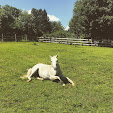First-years and sophomores are guaranteed housing. The two freshman quads are conveniently situated on campus and, while not luxurious, are in rather good shape (some floors have been recently renovated). One quad is two minutes' walking distance away from one of the major academic quads and three minutes away from the old campus center, which has one of the two main cafeterias, the mailroom, the campus convenience store, financial services, and the career center. The main library is also close by. The other quad is close to the other main cafeteria, the chapels, the science buildings, and the new campus center.
The majority of sophomores live in a "quad" that is actual made of two large residence halls designed to blend in with the trees nearby. These buildings are in less good shape than the freshman buildings, but since almost everyone is close by, it is very easy to keep in touch with friends. The mixed humanities academic quad and nearby cafeteria are still reasonably close, as are the next major sophomore building, "the Castle," which is — surprise — built to look like a castle, the health center, and the gym.
It used to be the case that juniors had the following options: get a suite with 5 close friends (the suites have 6 single rooms and 2 private bathrooms), get a single or double in the recently built junior/senior dorm, get an on-campus apartment (there are 5, 3, and 2-person apartments), or get an off-campus apartment.
This coming year, there will be a brand new residence hall for juniors, composed of 4- and 6-person suites. However, the other recently build junior/senior dorm is no longer an option. During the fall, it will be used by study abroad students. During the spring, all of the "midyear" first-years will be housed there. While I appreciate the effort to accommodate the study abroad students, housing the midyears there poses many problems:
1) It further isolates the midyear students by placing them physically distant from the two freshman quads.
2) It also places the midyear students closer to upperclassmen parties, some of which involve drinking. (Over-21 students can apply for a "wet" room and legally drink in the company of other over-21 students, but these rules are not always followed).
3) It reduces the number of housing options for upperclassmen whose housing is already not guaranteed.
You can guess which of the three is most troubling to rising juniors.
Before receiving my housing number, I had discussed getting a suite with some like-minded friends. We wanted to get a large group of people in order to increase the chance of more than 1 person getting a good number (the person with the lowest number in a group selects a room or suite and "pulls in" everyone else). When we got our numbers and checked the residence life website though, we found that the junior buildings with suites generally fill up by #1200. Junior/senior housing numbers start at 1000 and go up to 3000. My number, which was the lowest, was almost 1500. For the moment, it looks bad.
I'm hoping we can find a kind, like-minded classmate with a really good number. While I would be willing to get one of the on-campus apartments, they have a two less-than-charming traits:
1) The apartments are on the farthest edge of campus. Thus, in cases of inclement weather and morning sleepiness, it is necessary to use the campus shuttle system to get anywhere. It also cuts into the breezy socializing with friends that happens easily in a regular dorm building.
2) At night, the minimal, flickering fluorescent lighting, both inside and outside the buildings, combined with the harsh concrete, reminds one of those dark, shadowy apartment buildings where people run after each other with guns in action movies. At last they remind me of those shady movie apartments.
On the other hand, the on-campus apartments have one thing going for them:
1) I wouldn't have to commute.
Here's hoping it turns out for the best…

No comments:
Post a Comment